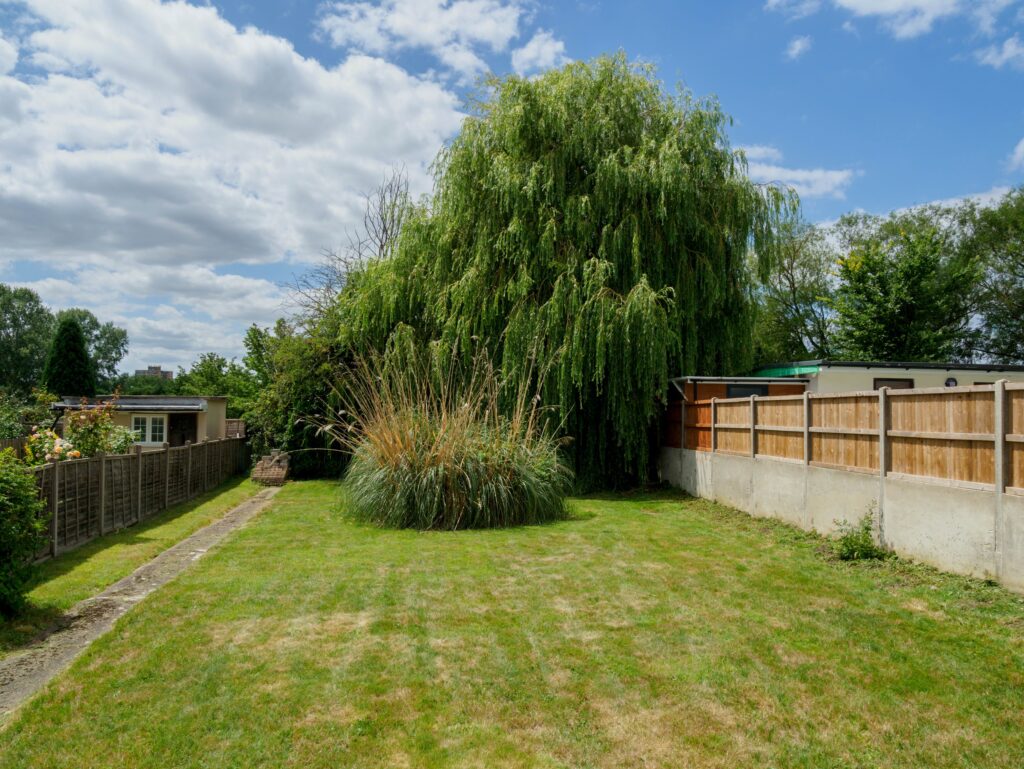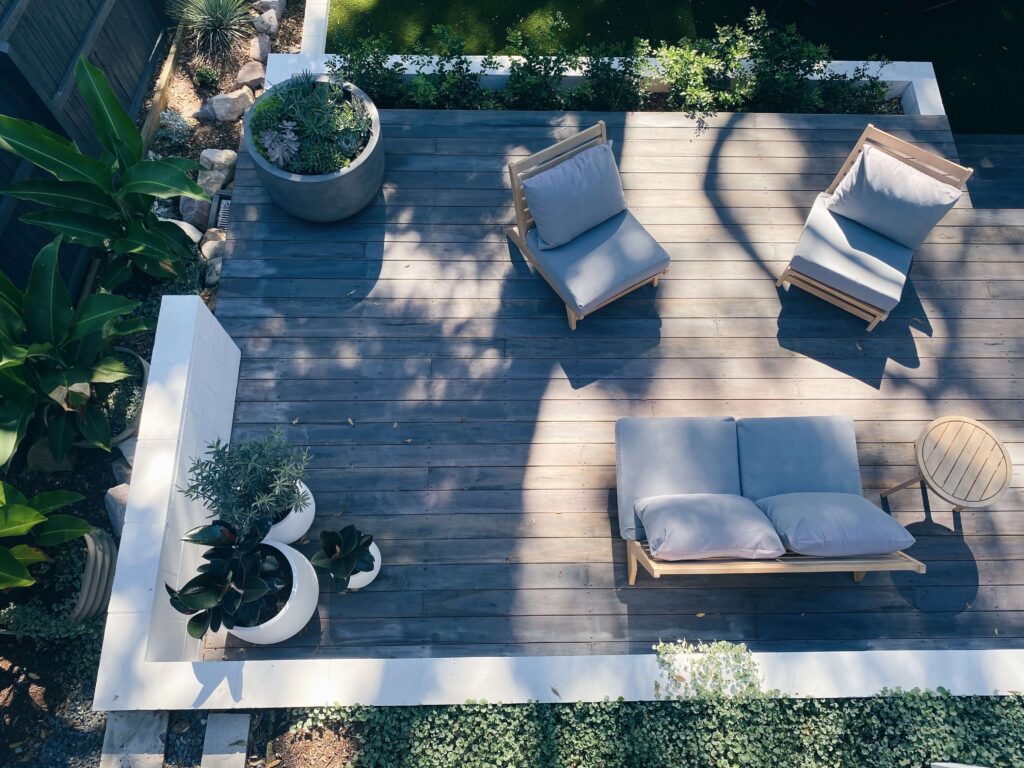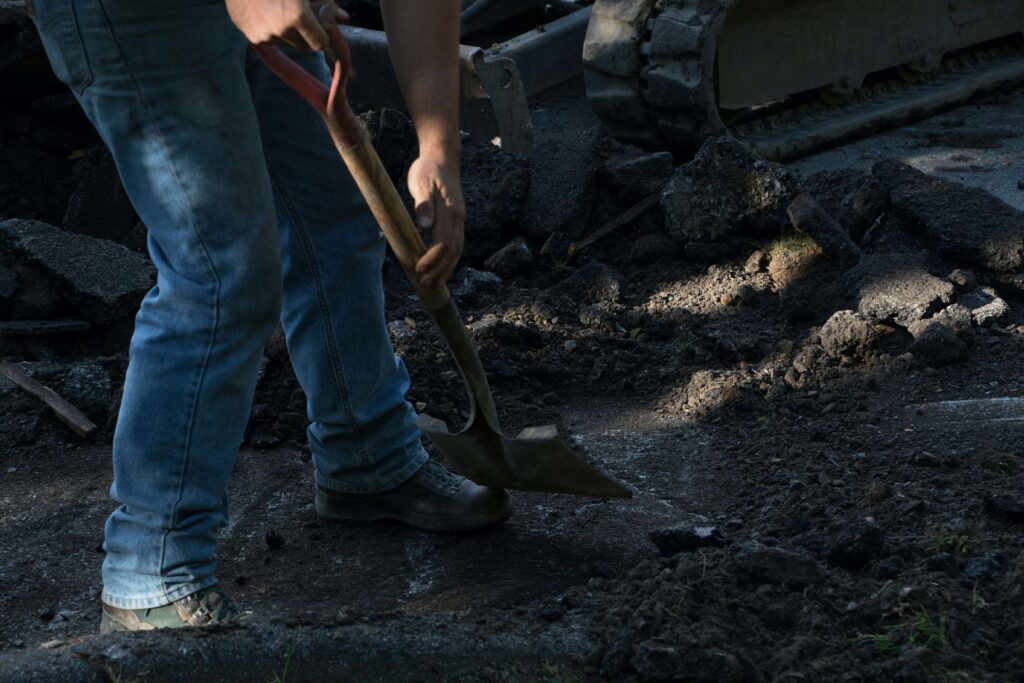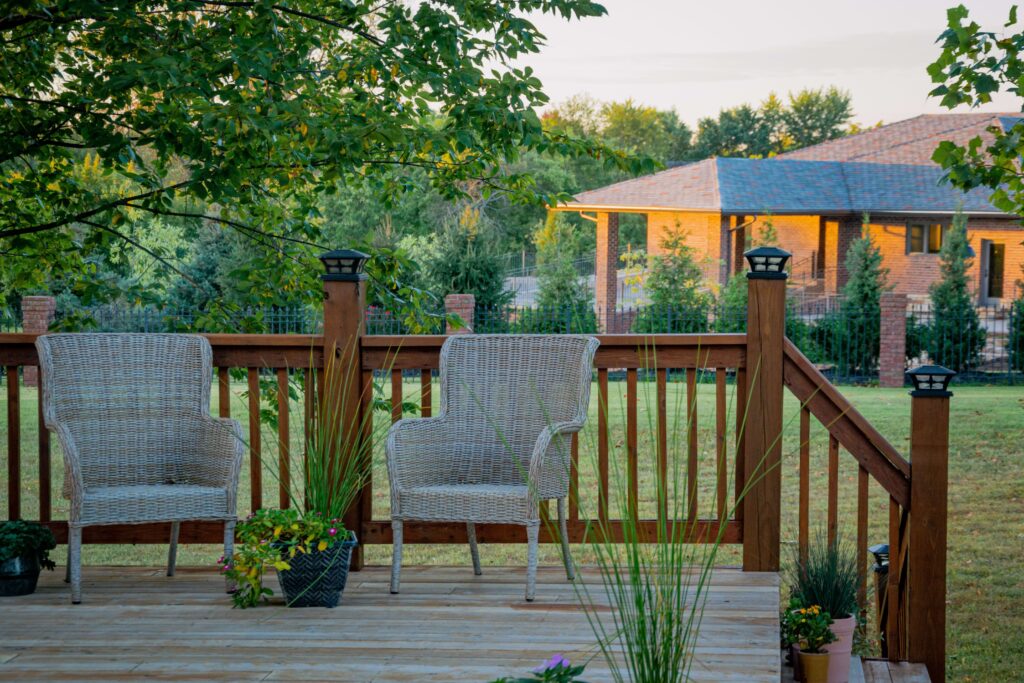From cozy backyard patios to expansive decks, hardscaping helps make any yard more functional and usable.
But how do you design a hardscape to maximize your outdoor space?
We’ve rounded up some expert tips to help you master hardscaping, so you can design and create the garden of your dreams.
Table of Contents
What Is Hardscaping?

Hardscaping uses hard materials like natural stone, concrete, wood, and metal to design and create landscape features that serve practical and aesthetic purposes. Examples of hardscaping include walkways, patios, retaining walls, fences, and water features. Unlike softscaping, which focuses on plant life, hardscaping focuses on the non-living elements of landscape design.
6 Types of Hardscaping

Anything non-living in your garden can be classed as hardscaping, but if you’re struggling to figure out what types will work for your yard, here are some ideas.
Patios
The most common type of hardscaping is a patio. These provide useable outdoor space for socializing while being incredibly low-maintenance.
Walkways
If your garden has different zones, you’ll need carefully-planned walkways to connect them. Without a walkway, people tend to use the most direct route, which could destroy elements of your softscape design.
Retaining walls
If you have areas of your yard prone to flooding, a retaining wall can help prevent soil erosion and help redirect the flow of rainwater. They are also great for splitting up a large yard and creating zones.
Outdoor living areas
Most outdoor living spaces need hardscaping elements, whether it’s a pergola, deck, balcony, fire pit, or seating area. Adding an outdoor living space to your landscape helps create more usable space and gives you better use of your garden.
Steps
If your garden has slopes or steep areas, steps can create safer access and visual appeal. Most people simply don’t use sloped areas of their yards, but with some well-designed steps, you can easily create tiered living spaces for patios, decks, and flowerbeds.
Water features
Although water isn’t hard, any type of fountain, pond, or water feature is classed as hardscaping. Ponds and fountains are beautiful elements if you have the space, and they attract wildlife into the garden, helping it come to life.
The Best Hardscaping Materials

When it comes to choosing materials for your hardscaping, focus on durability and functionality over aesthetic appeal. Anything left outside in the elements will undergo heavy weathering, so it needs to be hardy.
Stone
- Perfect for: patios, steps, and water features
Stone has the benefit of being extremely durable while looking beautiful in any landscape. Perfect for patios and walkways, see if you can find a local quarry to get some rock types local to your home.
Wood
- Perfect for: decking, seating, and borders
If you’re going for a cottage-core look, wood is a wonderful natural element to add to your hardscaping. However, it does need regular maintenance to keep it looking its best, so be prepared to repaint or restrain it every year.
Gravel
- Perfect for: walkways and borders
If you’re on a budget, gravel is an affordable way to create pathways and borders in your garden. You’ll find it at any local building merchant, and it creates pretty paths. You’ll have to sweep it a couple of times a year to keep it tidy, but other than that, it’s maintenance-free.
Concrete
- Perfect for: retaining walls, foundations, and outdoor kitchens
Concrete is often thought of as a strictly functional material, but it can be beautiful when used correctly. It’s a great option for retaining walls and foundations, but you could also use it to create durable countertops and seating areas for outdoor kitchens.
Metal
- Perfect for: sculptures, trellis, benches
Steel, aluminum, and other metals are expensive to include in hardscaping design, but they can look fantastic as a stand-out feature. If you have a local ironmonger nearby, they may be able to create a sculpture, bench, or trellis to give your garden a unique personality.
How to Design a Hardscape

When it comes to designing your landscape, planning and site preparation are key. These elements will likely be in your garden for the rest of your life, so it’s important to get them right.
Analyze and evaluate the site
Not all hardscaping elements will be right for your yard, so start with a site analysis. For example, if you want to lay a large patio, you need to be certain the ground is suitable to take the weight of it.
If you’re unsure, talk to an expert landscaper who will be able to give you some advice on which hardscaping elements are right for your yard.
Choose the right materials
The materials you use will come down to function and budget. Some of the best materials are more expensive up front, but they are worth the investment in the long run.
For example, if you’re thinking about installing decking, you could install either wood or composite planks. Wood planks are cheaper, but composite requires zero maintenance and last much longer.
Develop a design plan
If you’re not working with a professional landscaping company, start by creating a rough design plan on paper. Map out your garden (to scale if you can), and figure out where different hard elements can go.
This gives you the freedom to explore different designs and allows you to get it right before any digging starts.
Incorporate softscape elements
The best landscapes have a combination of hard and soft elements. Once you’ve figured out where to put patios, walkways, decks, and water features, incorporate softscaping elements, such as flowerbeds, vine plants, lawns, and trees. These will help your landscape come to life.
Create focal points
Your landscape should have focal points that draw the eye to different areas. If you have a fairly small garden, use one focal point, such as a patio, water feature, or deck.
If you have a large yard to work with, divide it into zones and create a different focal point in each zone. This will give your hardscape interest and encourage people to move around.
Hardscaping FAQs
Q: What is the difference between hardscape and landscape?
A: While hardscape refers to the nonliving elements in an outdoor space, a landscape refers to the living elements, such as plants, trees, and shrubs. Hardscape and landscape elements work together to create a cohesive and functional outdoor space.
Q: What are examples of hardscape design?
A: Some examples of hardscape design include:
- Patios: a flat area made of materials such as concrete or pavers that is used for outdoor dining or seating.
- Walkways: a path made of materials such as stone or gravel that connects different parts of the outdoor space.
- Retaining walls: a structure made of materials such as stone or wood that holds back soil and prevents erosion.
- Outdoor living areas: a designated space for outdoor activities such as cooking, lounging, or entertaining.
- Water features: a decorative element such as a fountain or pond that adds visual interest to the outdoor space.
- Steps: a set of stairs made of materials such as stone or concrete that connects different levels of the outdoor space.
Happy Hardscaping!
Just like any design project, hardscaping takes careful planning and consideration. The most important aspect is getting the layout right. Once you have your main hardscaping features in the right places, everything else can easily fall into place around them.
If you’re struggling with the plan or you’re unsure whether your garden is suitable for certain hardscaping elements, consult a professional landscape architect for some expert advice.

